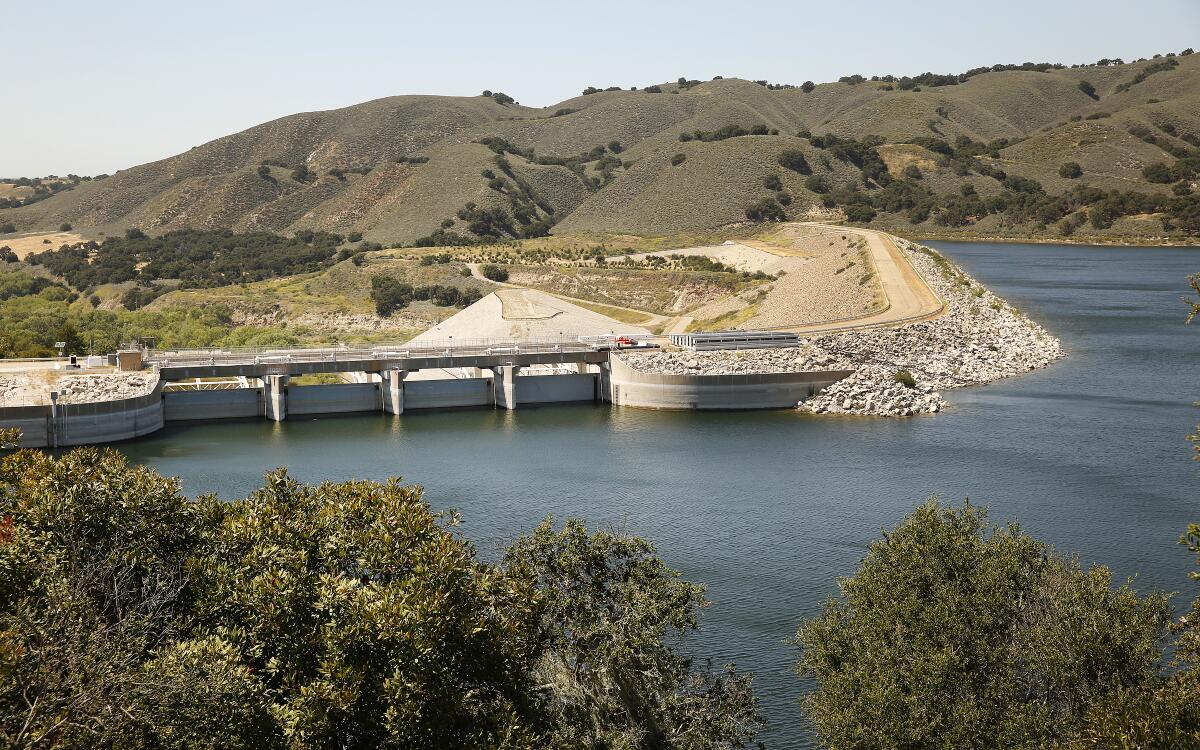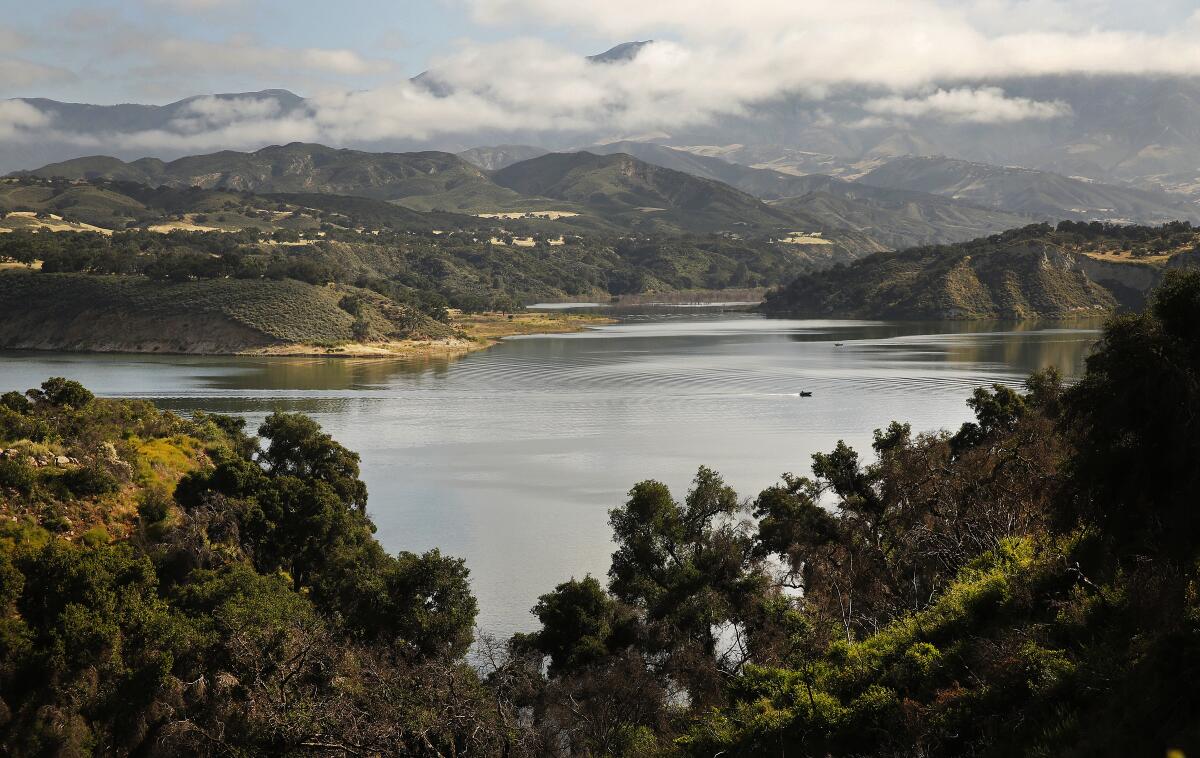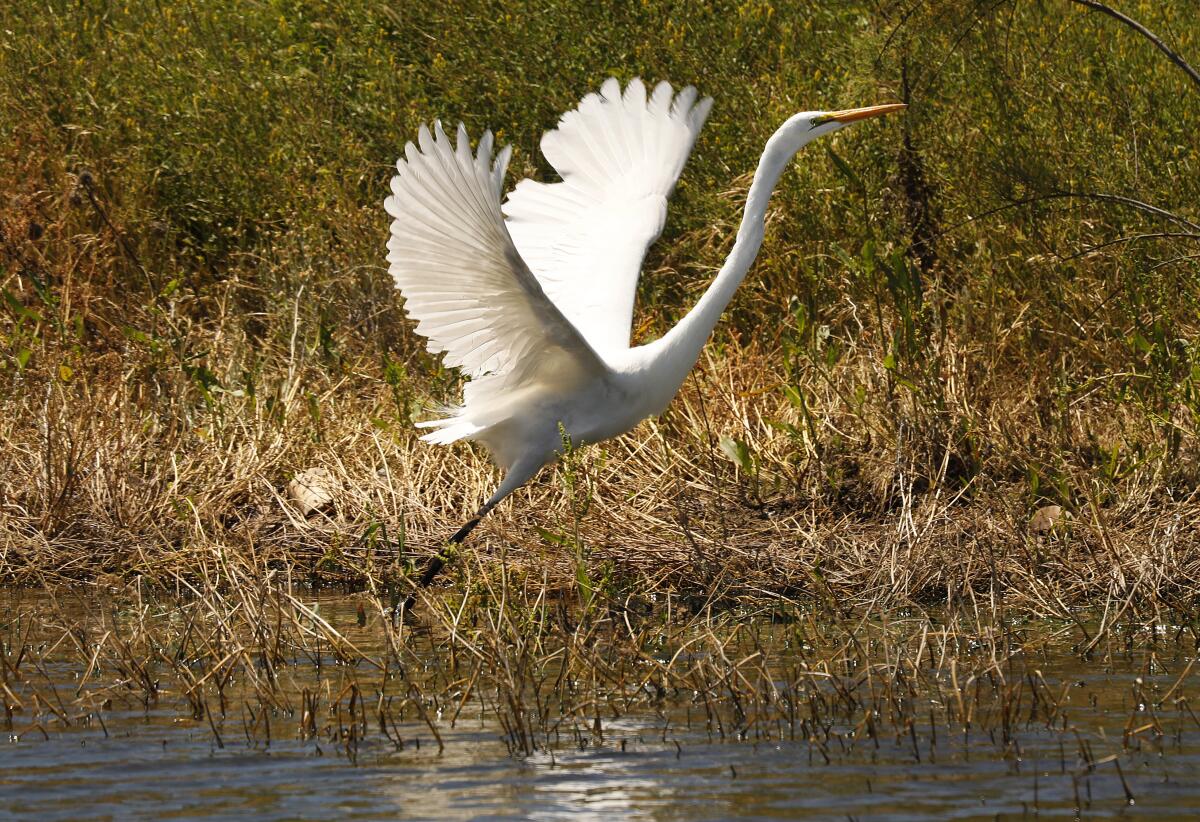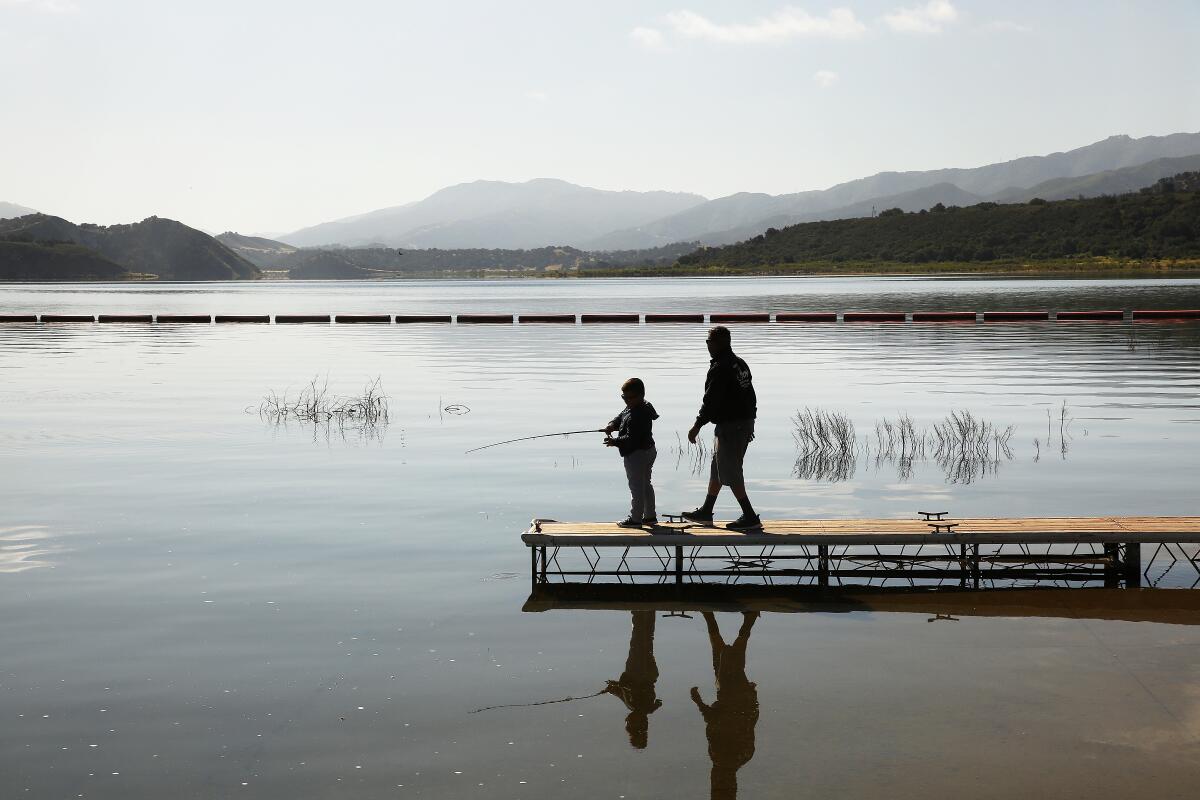California megadrought? Not if you look at precipitation

- Share via
If you want to know what climate change means for California’s water supply, consider the last two Februaries.
In 126 years of statewide record-keeping, you can’t find a drier February than the one we just experienced. But February 2019 was the third-wettest on record.
The extremes underscore how global warming is exaggerating the year-to-year swings in California precipitation, which is naturally the most variable in the country.
But surprisingly, the dramatic ups and downs even out. Average precipitation is not declining.
Michael Anderson, the state climatologist, points out that despite periods of withering drought in the last two decades, precipitation in the northern Sierra Nevada — a key water source for the state — hasn’t changed.
Moreover, the region was actually drier during the Dust Bowl era of the 1920s and ‘30s.
“Oddly enough, in the 21st century — because we’ve had those wet extremes and dry years that haven’t been extremely dry — our average comes out really close to” the 20th century, Anderson said.

Statewide, the four wettest Oct. 1-Sept. 30 water years have been recorded since 1980, according to the California Climate Tracker.
That mirrors projections that global warming will hit California with more extreme wet years and boost precipitation a bit in the north.
But how does that fit with a recent scientific paper that concluded the Southwest, including all of California, has been in the grip of a 21st century megadrought intensified by human-caused global warming?
The study, which ranked 2000-2018 as the second-driest 19-year period in 1,200 years, factored in far more than precipitation. Researchers also modeled soil moisture, humidity and temperature and analyzed tree ring records.
Look solely at precipitation and the Southwest has not been stuck in a megadrought — and was drier in the Dust Bowl era — said co-author John Abatzoglou, an associate geography professor at the University of Idaho.
Moreover, using the broader criteria of soil moisture, etc., the paper pointed to 1980-1998 as the wettest 19-year period in at least 1,200 years.
“Basically, we had the wettest multi-decadal period followed by the second-driest multi-decadal period back to back,” Abatzoglou said. “That’s an eye-opening roller coaster.”
All of that is rewriting a water management playbook that is appearing increasingly outdated.
Though overall precipitation may not significantly change, it will come in a different form and at different times. Rising temperatures are turning snow into rain, diminishing the mountain snowpack that functions as nature’s slow-release reservoir in the spring and early summer. Evaporation will increase.
The rainy season is expected to be shorter and more intense, shifting the timing of peak runoff that helps fill a vast system of man-made reservoirs.

A 2018 report warned that despite a modest increase in Northern California streamflow in coming decades, State Water Project deliveries that help supply more than 27 million Californians will go down, not up. The reason: There will be more flood flows that are difficult to capture and store.
“We’ve learned through drought cycle after drought cycle after flood cycle to be prepared for another dry year,” said Brad Coffey, water resource manager of the Metropolitan Water District of Southern California, the state project’s biggest customer.
“That said, we are concerned about how climate change will be affecting water supplies for the future,” he added.
How California should adapt is the subject of considerable debate and not a little controversy: Build more dams and reservoirs? Construct a huge tunnel to divert more Sacramento River flow and send it south?
Other proposals include the revival of natural flood plains and the revision of old rules that require reservoir operators to leave space for a spring snowmelt the state will see less and less of.
Coastal agencies want to capture more storm water that now rushes to the sea.
“Water management strategies are going to be changing,” said regional climatologist Daniel McEvoy at the Western Regional Climate Center.
Whether big infrastructure projects such as the long planned and much disputed tunnel system under the Sacramento-San Joaquin Delta or the proposed Sites Reservoir in Northern California are ever built is an open question.
But urban water users are moving to diversify sources that will help buffer them from greater extremes.
Metropolitan, the country’s largest distributor of treated drinking water, has launched a pilot project to gauge the feasibility of using cleansed wastewater from a big Carson sewage plant to replenish regional aquifers.
“Our goal is to de-link year-to-year hydrology with year-to-year water supply,” Coffey said. “Our investments in storage and local conservation and local supplies are the way to do that.”

Spring storms boosted rainy season totals to above average in many parts of Southern California this year. Santa Barbara County’s Lake Cachuma, which emptied during the 2012-2016 drought, was 80% full for the second year in a row.
But statewide, the water year is so far among the 20 driest on record, prompting the big government water projects to slash deliveries from the north.
Metropolitan nonetheless says it will have no problems meeting demand for the foreseeable future, thanks to record reserves in regional reservoirs and groundwater banks.
The Los Angeles Department of Water and Power, which gets most of its supplies from Metropolitan and the Owens Valley, similarly says it will have no difficulty meeting demand this year.
Both agencies have embraced water conservation programs that have yielded impressive results.
Annual water use by the city of Los Angeles has stabilized at the lowest levels in nearly half a century.
In the early 1970s, when the city’s population was approaching 3 million, Angelenos used an average of 586,000 acre-feet of water a year. Now, as the population hovers around 4 million, the average is 502,000 acre-feet.
Metropolitan used to say an acre-foot would supply two Southern California households for a year. Now it serves three households.
More efficient plumbing fixtures and appliances, lawn-removal rebate programs and tiered water rates have all played a role in the downward trends, as have changing development patterns.
In L.A., new housing is likely to be a four-story apartment building where residents are watering a few potted plants rather than the lawn that was a standard feature of 20th century housing tracts.
Statewide, the conservation habits city dwellers were forced to adopt during the parched years of 2012 to 2016 seem to have largely stuck.
The first-ever, state-imposed cuts on urban water use were lifted in late 2017. But overall urban use has rebounded only slightly. It remains 20% less than it was in 2013, according to the State Water Resources Control Board.
“Californians continue to conserve water,” said Charlotte Ely, a water board senior environmental scientist. “I think people learned a lot during the last drought.”









